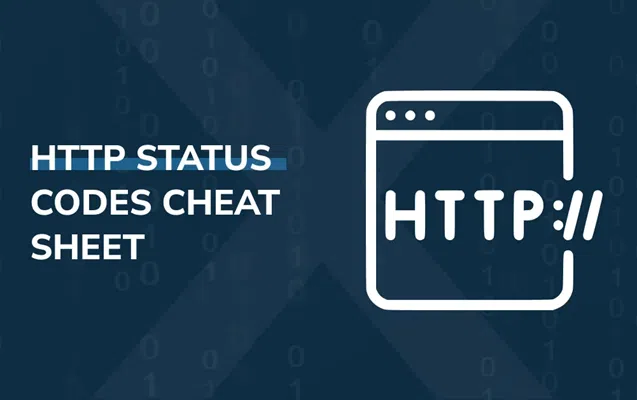What are HTTP status codes?
An HTTP status code is a server response to a browser’s request. When you visit a website, your browser sends a request to the site’s server, and the server then responds to the browser’s request with a three-digit code: the HTTP status code.
These status codes are the Internet equivalent of a conversation between your browser and the server. They communicate whether things between the two are A-okay, touch-and-go, or whether something is wrong. The first digit of each three-digit status code begins with one of five numbers, 1 through 5; you may see this expressed as 1xx or 5xx to indicate status codes in that range. Each of those ranges encompasses a different class of server response.
Common HTTP status code classes:
- 1xxs – Informational responses: The server is thinking through the request.
- 2xxs – Success! The request was successfully completed and the server gave the browser the expected response.
- 3xxs – Redirection: You got redirected somewhere else. The request was received, but there’s a redirect of some kind.
- 4xxs – Client errors: Page not found. The site or page couldn’t be reached. (The request was made, but the page isn’t valid — this is an error on the website’s side of the conversation and often appears when a page doesn’t exist on the site.)
- 5xxs – Server errors: Failure. A valid request was made by the client but the server failed to complete the request.
1xx: HTTP Informational Codes
| Code | Description |
| 100 | Continue |
| 101 | Switching Protocols |
| 102 | Processing WebDAV |
| 103 | Checkpoint draft POST PUT |
| 122 | Request-URI too long IE7 |
2xx: HTTP Successful Codes
| Code | Description |
| 200 | OK |
| 201 | Created |
| 202 | Accepted |
| 203 | Non-Authoritative Information 1.1 |
| 204 | No Content |
| 205 | Reset Content |
| 206 | Partial Content |
| 207 | Multi-Status WebDAV 4918 |
| 208 | Already Reported WebDAV 5842 |
| 226 | IM Used 3229 GET |
3xx: HTTP Redirection Codes
| Code | Description |
| 300 | Multiple Choices |
| 301 | Moved Permanently |
| 302 | Found |
| 303 | See Other 1.1 |
| 304 | Not Modified |
| 305 | Use Proxy 1.1 |
| 306 | Switch Proxy unused |
| 307 | Temporary Redirect 1.1 |
| 308 | Permanent Redirect 7538 |
307 and 308 are similar to 302 and 301, but the new request method after redirect must be the same, as on the initial request.
4xx: HTTP Client Error Code
| Code | Description |
| 400 | Bad Request |
| 401 | Unauthorized |
| 402 | Payment Required res |
| 403 | Forbidden |
| 404 | Not Found |
| 405 | Method Not Allowed |
| 406 | Not Acceptable |
| 407 | Proxy Authentication Required |
| 408 | Request Timeout |
| 409 | Conflict |
| 410 | Gone |
| 411 | Length Required |
| 412 | Precondition Failed |
| 413 | Request Entity Too Large |
| 414 | Request-URI Too Long |
| 415 | Unsupported Media Type |
| 416 | Requested Range Not Satisfiable |
| 417 | Expectation Failed |
| 418 | I’m a teapot 2324 |
| 422 | Unprocessable Entity WebDAV 4918 |
| 423 | Locked WebDAV 4918 |
| 424 | Failed Dependency WebDAV 4918 |
| 425 | Unordered Collection 3648 |
| 426 | Upgrade Required 2817 |
| 428 | Precondition Required draft |
| 429 | Too Many Requests draft |
| 431 | Request Header Fields Too Large draft |
| 444 | No Response nginx |
| 449 | Retry With MS |
| 450 | Blocked By Windows Parental Controls MS |
| 451 | Unavailable For Legal Reasons draft |
| 499 | Client Closed Request nginx |
5xx: HTTP Server Error Codes
| Code | Description |
| 500 | Internal Server Error |
| 501 | Not Implemented |
| 502 | Bad Gateway |
| 503 | Service Unavailable |
| 504 | Gateway Timeout |
| 505 | HTTP Version Not Supported |
| 506 | Variant Also Negotiates 2295 |
| 507 | Insufficient Storage WebDAV 4918 |
| 508 | Loop Detected WebDAV 5842 |
| 509 | Bandwidth Limit Exceeded nostd |
| 510 | Not Extended 2774 |
| 511 | Network Authentication Required draft |
| 598 | Network read timeout error nostd |
| 599 | Network connect timeout error nostd |
HTTP Code Comments
| WebDAV | WebDAV extension |
| 1.1 | HTTP/1.1 |
| GET, POST, PUT, POST | For these methods only |
| IE | IE extension |
| MS | MS extension |
| nginx | nginx extension |
| 2518, 2817, 2295, 2774, 3229, 4918, 5842 | RFC number |
| draft | Proposed draft |
| nostd | Non standard extension |
| res | Reserved for future use |
| unused | No more in use, deprecated |
Wikipedia was used to produce all HTTP status codes content: http://en.wikipedia.org/wiki/HTTP_status






Leave a Comment